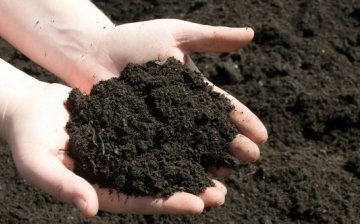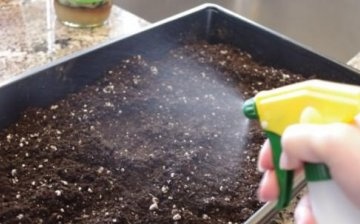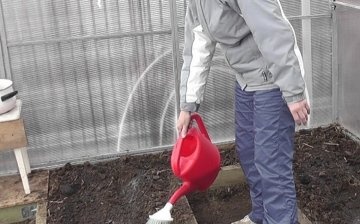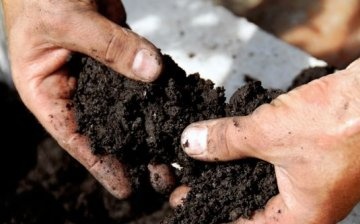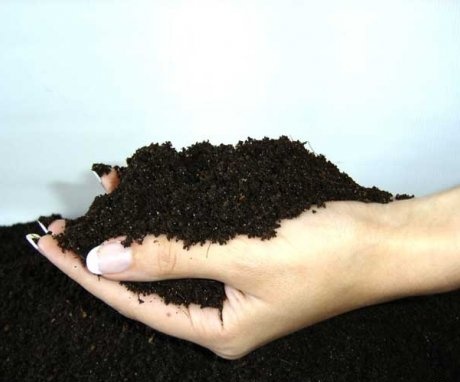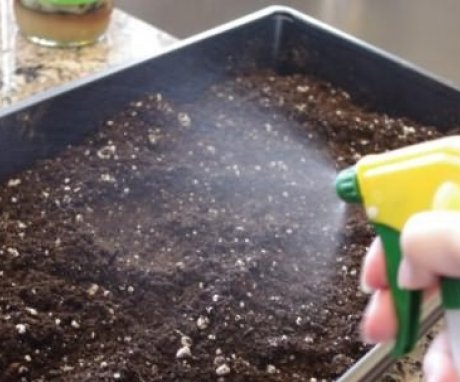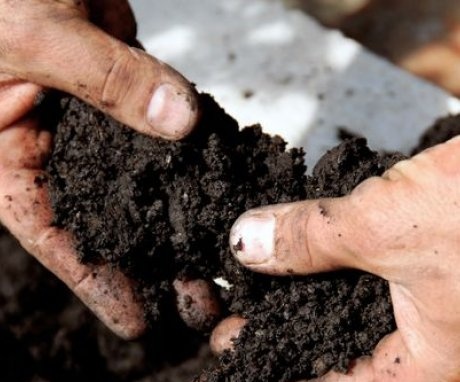Soil disinfection: chemical, agrotechnical and biological methods
Gardeners, gardeners every year spend a huge amount of time, effort and money to get a high yield. But often their efforts are nullified by small, invisible pathogens.
Content:
Soil disinfection methods
Soil disinfection measures are carried out to combat existing diseases and to prevent them. Diseases are fungal and bacterial. Pathogens, settling on plants, render the individual parts unusable first, and then the entire plant. They then settle in the soil and wait for the right conditions to start over. Each of diseases has manifestations peculiar only to it. But common symptoms are:
- spots on leaves, trunks
- drying of leaves during the active growing season
- cracking, decay of berries and fruits
Soil disinfection is carried out in autumn and spring. It can be tillage:
It is quite difficult to disinfect open ground. The procedures require a lot of effort, money to carry them out. Sometimes they don't give the desired result. But the owners have little choice: sit without a crop or try to solve the problem.
You should not take measures to prevent all possible diseases, you should take into account the weather conditions and the diseases they contribute to.
So the likelihood of infection with late blight in dry weather is much lower than in rainy weather. The preparations are applied to the roots of plants during planting or distributed in the soil evenly throughout the entire plot. Soil disinfection methods:
- Chemical
- Agrotechnical
- Biological
Chemical method
This method is most effective for quickly killing pathogens. But along with them, useful microorganisms die, without which you cannot get high-quality soil. Therefore, in the long term, it will lead to the impoverishment of the land and the need to apply agrotechnical measures to revive it.
Types of drugs and application:
- Bleach is applied to the soil six months before landing... Norm up to 200 g / m2. The drug must be embedded in the ground. It kills most pathogens. But not all plants respond positively to chlorine.
- Formalin is applied 15 days before planting. Helps to fight the blackleg pathogen. Do not use in frosty weather. A glass of 40 percent product is poured into a bucket of water. This amount is sufficient for processing 1 m2 of soil. Cover with a film. Can mulch the surface is not contaminated with humus, straw, freshly cut grass. After 3 days, the shelter is removed, the soil is shoveled. Formalin vapors come out. If this is not done, then the plants planted in such soil will die.
- Fungicide TMTD is used in dry form or in suspension. The soil is loosened after application. 60 g of the drug is enough per square meter. The drug does not adversely affect plants. Suspension (0.6%) is diluted in a bucket of water and applied to the soil before planting.
- Copper sulfate helps to decontaminate the soil in greenhouses after harvest.For this, solutions of copper-containing preparations are used. About 50 g of copper sulfate is poured onto a bucket of water. Copper is good for plants and is needed for their normal development. But large amounts of this element have the opposite effect. The soil begins to pass air 2 times worse. The procedure promotes the release of nitrous oxide into the environment. Plants overfed with copper lose their ability to get phosphorus and iron from the soil. Beneficial microorganisms are suppressed. Can be used every 5 years.
- Iprodion 2% is scattered over the site (150 g) and embedded in the soil. Helps get rid of sclerotiniasis, gray rot, fusarium.
Agrotechnical method
Agrotechnical method of soil disinfection is a set of procedures, the implementation of which helps to get rid of pathogens.
In order for the soil to remain fertile for as long as possible and give a high yield, you need to properly organize crop rotation.
They use green manures - crops that are planted not for harvesting, but to improve the condition of the soil. It can be mustard, oats. They are sown during harvesting, waiting for the seedlings to grow up. The seeds should not ripen. Plants are mowed and embedded in the soil.
In order to disinfect the soil, it is laid in a stack about 3 m wide and up to 1.5 m high. In the process of laying, it is poured with feces or liquid manure. Sour soil is lime, adding about 4 kg of lime per 1 m2. Once a year they shovel a bunch. In two to three years, weed seeds, bacteria, basically die. In order to get rid of white rot and keels, you need to wait 4 years. The method is intended for processing a small amount of soil.
Thermal disinfection is carried out for the soil intended for cultivation seedlings.
- You can spill it with boiling water, then dry it. But it will take longer than steam disinfection for an hour.
- In greenhouses, the soil is dug up with rotary machines to a depth of 15 to 50 cm, covered with a heat-resistant film and steam is started using a steam generator. This method is used in large greenhouses.
- Processing time from 10 min. (weed seeds and anaerobic parasites), up to 40 min (nematodes and anaerobic fungi).
- After such treatment, practically all microorganisms, including useful ones, die in the soil. The salinity of the soil is increasing.
- To reduce the concentration of salts, the area is spilled abundantly with water. To populate the soil with useful microflora, manure is introduced.
Recently, methods have become popular organic farming... Disinfection is carried out by adjusting the ratio of beneficial and pathogenic microorganisms. This is a whole range of activities: sowing siderates, making quality compostobtained in the usual way or as a result of the application of the radiance product.
Biological method
The soil is disinfected with biological fungicides that reduce the number of pathogens.
Microbiological preparations Fitosporin, Trichodermin, Alirin B, Baikal EM-1 are introduced.
They remove the so-called soil fatigue, which occurs as a result of growing the same crops on the site (in a greenhouse, hotbeds), and contribute to an increase in the number of types of beneficial microorganisms. The result of their vital activity is an increase in the amount of easily assimilated compounds of nitrogen, phosphorus, potassium. At the same time, the toxicity of aluminum and iron decreases.
Preparations for soil disinfection:
- The site is treated with phytosporin in autumn or spring. You can add 2 more treatments, bringing the total to 4. Consumption - 6 ml per bucket of water. This is enough for a treatment of 1 m2. Sick plants are watered with a solution under the root (1 liter per bush).
- Trichodermin contains spores and mycelium of the fungus Trichoderma lignorum, as well as biologically active products of its vital activity. They suppress pathogenic fungi that cause cancer and shoot shrinkage. When preparing the soil for cultivation seedlings mix the drug at the rate of 1 g per 1 liter of soil. The planted plants are watered with a solution of 100 ml of Trichodermin in a bucket of water.
- Glyocladin is similar in its mode of action to Trichodermin. Fights against causative agents of root rot, wilting, verticillosis, late blight. Removes toxicity of soil after chemical preparations. Effective in restoring beneficial microflora. When planting plants, the Glyocladin tablet is applied to a depth of 1 cm. The soil around the plant is watered, the drug tablet is placed near the plant roots. Cover with a thick layer of mulch. Water for several days to keep the soil moist. The drug acts at a depth of 10 cm, humidity is more than 60%. The temperature should be at least 14 and not higher than 27 degrees. The spores of the fungus settle on the roots of plants, intertwine with them, forming mycorrhiza. It enhances nutrition several times, converting insoluble compounds into a form that is convenient for assimilation. Delivers enzymes and biostimulants to the plant. All this only works when mulch is available. The first year, the soil is cultivated 2 times, then once. The interval between the use of Glyocladin and Alirin-B is one to two weeks.
- Baikal EM-1 is used for prevention diseases after harvest and in the spring, a week before planting seedlings. To do this, half a glass of the product is diluted in a bucket of water. 2.5 liters of the finished product are added per 1m2.
- Alirin-B is used to combat root rot. Dissolve 1 tablet in 5 liters of water and water the plants. Fights root rot pathogens. For prevention, take half the norm. Baikal EM-1 is used together with Alirin B or separately. Biological preparations cannot be added together with chemical ones or immediately after them. You need to wait at least 2 weeks, otherwise their beneficial microorganisms will die.
- Garlic, marigold, calendula contribute to soil cleansing. Planting or spilling the soil with an infusion of these plants improves the condition of the soil.
It is impossible to say unequivocally which of the methods is best. It is necessary to use agrotechnical, as necessary, apply biological, and in extreme cases - chemical methods.
More information can be found in the video:



